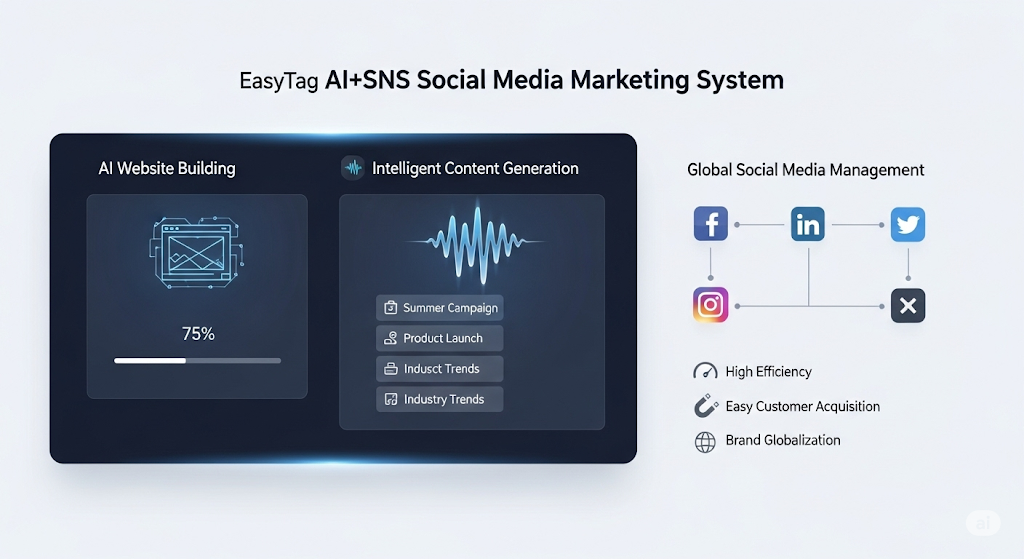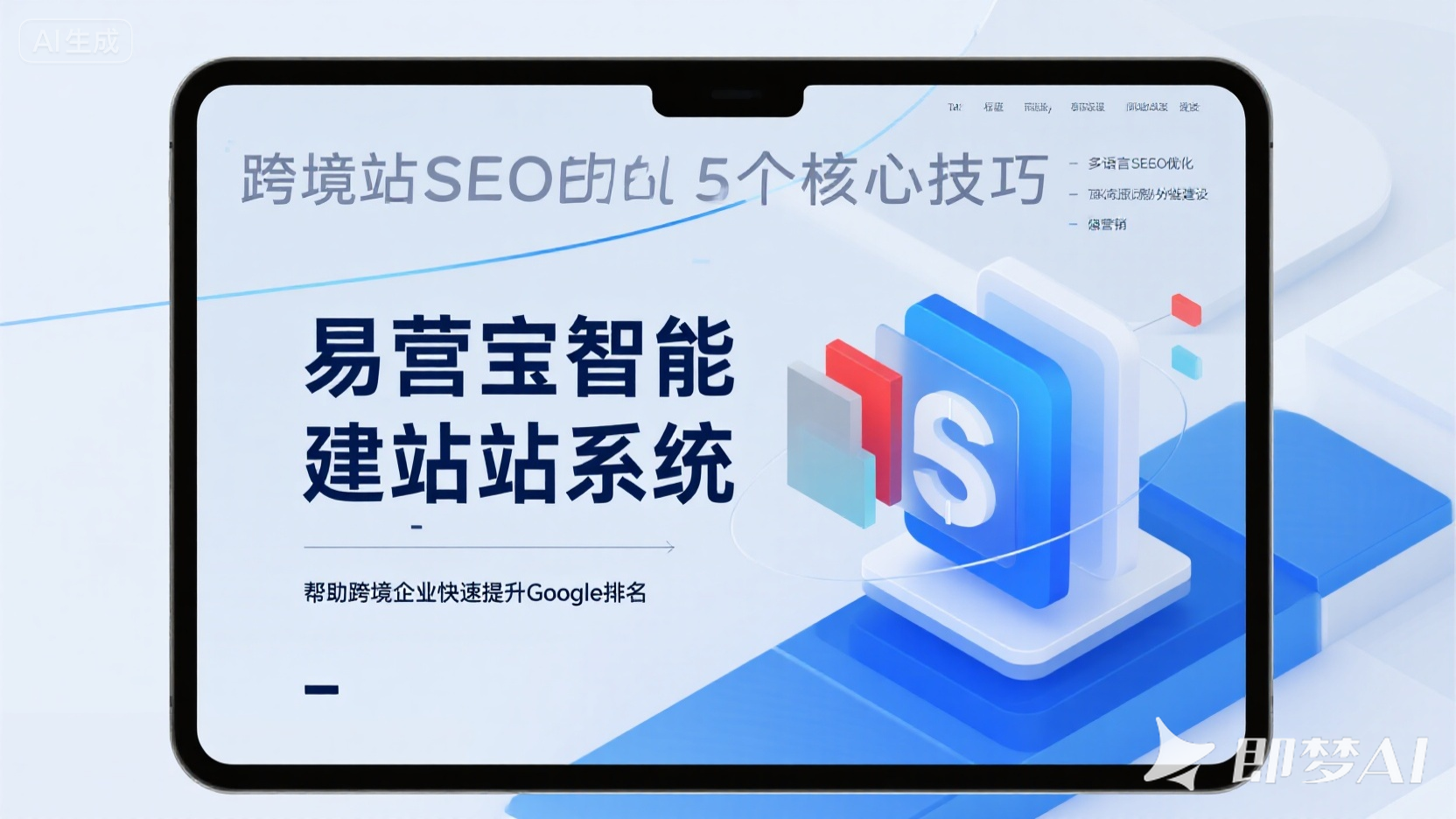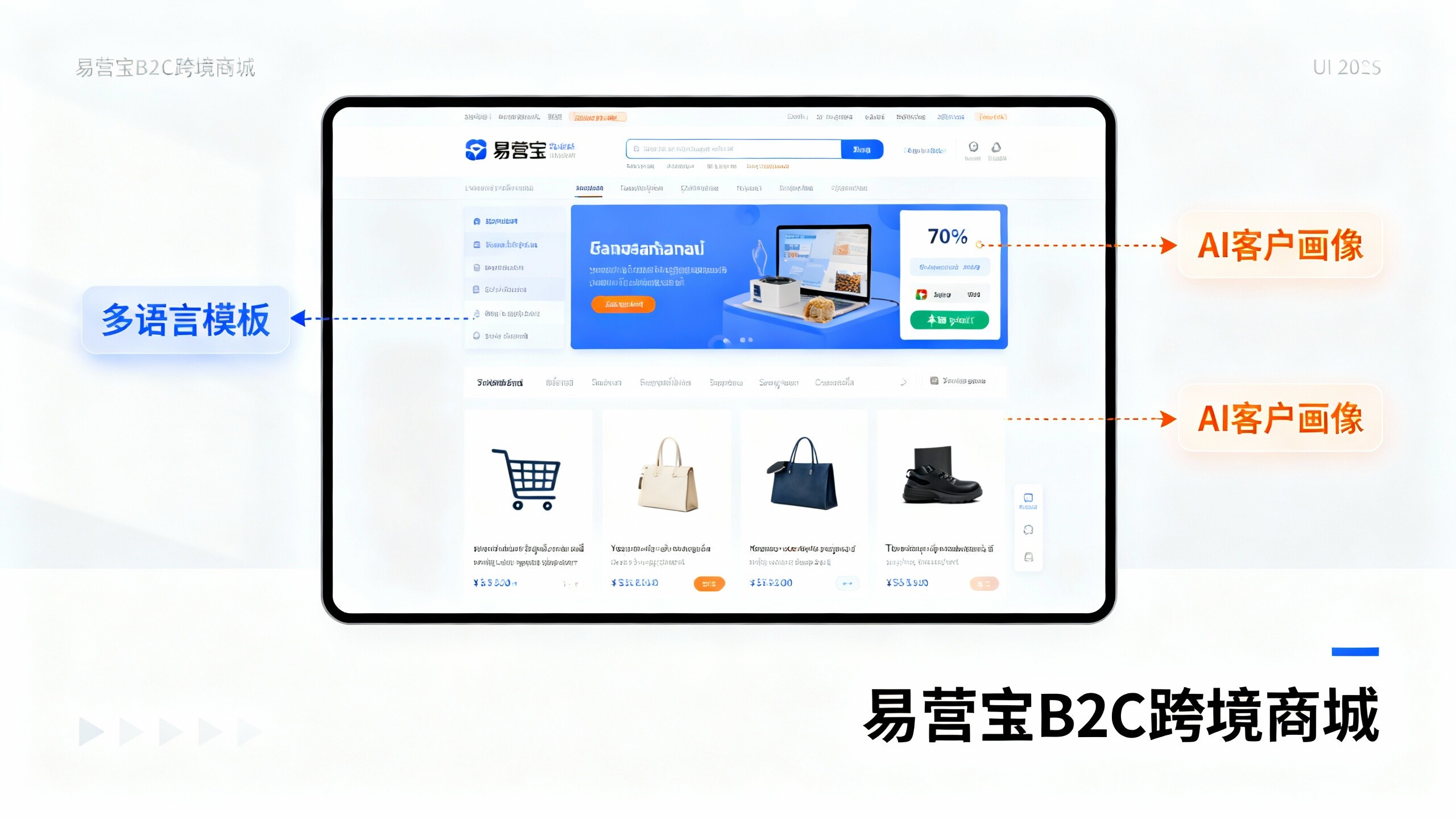Easy Operation Cloud Intelligent Website Marketing System Platform!
- Harbin City Partner Testimonial: AI Marketing Engine Boosts Conversion Rates by 5x2025-11-17View details
- Dalian City Partners' Real Record: Why Did They Choose AI Marketing Engine? The Results Are Astonishing2025-11-14View details
- New Opportunities for Wuxi City Partners: AI Marketing Engine Empowers Traditional Business Transformation2025-11-14View details
- Why is the AI Marketing Engine + City Partner Model Rapidly Exploding in Nanchang?2025-11-14View details
- Before becoming a Taiyuan City Partner, you must know these 5 truths about AI marketing engines2025-11-17View details
- Struggling with Facebook ad optimization? 3 steps to boost ROI over 50% with proven techniques2025-11-14View details
- How can an AI+SEM smart advertising marketing system achieve double the advertising efficiency?2025-11-14View details
- Using AI+SNS social media full-intelligent marketing system to increase fans by 100,000+ monthly2025-11-17View details
Multilingual Independent Foreign Trade Website Building vs. Localized Marketplace: Which is More Suitable for Your Brand Promotion?
When planning your overseas expansion, choosing between a multilingual independent foreign trade website and a localized Marketplace will directly impact brand promotion and multilingual SEO optimization results.
Advantages of Independent Websites: Brand Control, Technical Scalability, and Multilingual SEO Value
For B2B and B2C enterprises aiming to build long-term brand assets, multilingual independent foreign trade websites offer strategic value that cannot be fully replaced by localized Marketplaces. The primary advantage of an independent website lies in brand control: companies can freely design user journeys, showcase product narratives, implement customized marketing funnels, and accumulate domain authority through content strategies. Combined with multilingual website development and multilingual SEO optimization services, independent websites can leverage semantic content and localized keywords to gradually increase organic traffic share in target markets. On the technical side, global server acceleration and CDN deployment directly determine the loading experience of multilingual websites—faster page response times reduce bounce rates and improve SEO performance. For implementation, proper URL structures, Hreflang tags, language switching logic, and localized meta tags (Title/Description) form the foundation of multilingual SEO optimization. Content-wise, achieving localized expression, long-tail keyword coverage, and industry-specific contextual assets is essential for sustained search traffic. Long-term, independent websites facilitate the creation of owned traffic pools and brand trust, demanding higher operational standards but delivering more stable returns for foreign trade website operators.

Pros and Limitations of Localized Marketplaces: Speed & Traffic vs. Brand & Data Ownership
Localized Marketplaces (e.g., leading B2B/B2C platforms in specific countries/regions) excel in lowering entry barriers, initial traffic acquisition, and conversion efficiency. For foreign trade businesses with limited resources and teams, joining localized platforms enables faster reach to target customers by leveraging platform traffic pools and local trust mechanisms. Simultaneously, Marketplaces typically support localized logistics, payment, and customer service systems, reducing trial-and-error costs in compliance and user experience. However, platform traffic does not equate to brand assets: customer touchpoints on Marketplaces usually belong to the platform, limiting access to user behavior data and repeat purchase pathways—this disadvantages long-term brand promotion and multilingual SEO optimization. Additionally, competition on Marketplaces is often price- and promotion-driven, weakening brand premium potential. For SEO, platform-internal search algorithms increase dependency on platform rules, making it harder to improve external search visibility through content strategies. Overall, Marketplaces suit short-term lead generation and market validation but should serve as one channel in a matrix when building sustainable brands and owned traffic.
Marketing Mix: Multilingual Websites + SEM Synergy and Landing Strategies

Best practices often involve clear role differentiation between independent websites and localized Marketplaces, coupled with SEM optimization techniques for channel synergy. Specific tactics include: (1) Using multilingual foreign trade independent websites as brand and content hubs for multilingual SEO optimization, building industry whitepapers, case libraries, and solution pages to boost organic traffic and target keyword rankings; (2) During market entry or specific campaigns, leveraging paid traffic for accelerated conversions, combining audience profiling and smart bidding to achieve high-ROI investments. To ensure campaign effectiveness, implement attribution tracking systems to connect ad clicks, on-site behavior, and final conversions, refining keyword filters and ad creatives. Enterprises can partner with mature ad services (e.g., specialized Google Ads solutions) for campaign planning, performance tracking, precise targeting, and multilingual scenario adaptation, visualized through performance dashboards. Integrating organic and paid traffic data enables clearer channel value assessment for balanced budget allocation.
In practice, allocating partial budgets to cloud-based smart bidding tools and automated creative generation can reduce labor costs while increasing ad frequency and multilingual asset output efficiency. For example, AI-generated multilingual ad copies and landing pages, adjusted via real-time audience and bid strategy feedback, improve inquiry conversion rates and lower cost-per-acquisition. For enterprises targeting multiple countries/regions, supplementing with Marketplace traffic while using independent websites as long-term brand assets alongside systematic SEM optimization typically yields balanced short-to-mid-term growth.
Costs, KPIs, and Selection Advice: Decision-Making Under Resource Constraints
Decision-making requires weighing three factors: budget and time-to-market, team capabilities and technical infrastructure, and target market competition. For rapid product validation and initial customer acquisition, localized Marketplaces are preferable due to their traffic and service ecosystems. For long-term brand building, lower customer acquisition costs, and cumulative search assets, prioritize multilingual independent website development and SEO services. Cost-wise, independent websites involve upfront expenses for setup, servers, content creation, and SEO, while Marketplaces focus on commissions and platform ad spend. When measuring KPIs, track short-term inquiries, CPC, and conversion costs alongside long-term organic traffic growth, domain authority, and branded search volume. Practical implementation suggests phased strategies: Phase 1 uses Marketplaces for market validation and supply chain optimization; Phase 2 builds independent websites and multilingual content systems; Phase 3 gradually shifts budgets to high-ROI owned channels while outputting branded content.

For execution, if seeking integrated partners, prioritize service providers with global server acceleration, multilingual SEO, social automation, and smart ad capabilities to reduce operational complexity. Combining proprietary bidding algorithms with bilingual operational expertise enables finer audience targeting and creative optimization. For quick testing and visualized tracking, consider integrated ad product links like Google Ads, which offers mature solutions in precision targeting and performance visualization, complementing multilingual website development for growth loops.
Conclusion and Actionable Recommendations
In summary, independent websites and localized Marketplaces have distinct strengths: multilingual foreign trade websites better serve long-term brand building and SEO, while Marketplaces excel in rapid lead generation and market testing. Adopt a hybrid strategy—using independent websites as brand and content hubs, Marketplaces as traffic accelerators, and SEM optimization for channel synergy. When selecting partners, prioritize providers with multilingual website development, global server acceleration, and ad deployment capabilities to ensure integrated technical and operational delivery. Platforms offering smart site building, AI marketing engines, and global traffic ecosystems can provide end-to-end solutions from website development to SEO and ad deployment, helping businesses achieve sustainable overseas growth. Contact us to explore customized solutions and begin your global brand promotion journey.
- Website
- Independent site operation
- Foreign Trade Independent Website Operation
- Independent website building
- Global Server Acceleration
- Multilingual website construction
- SEO optimization services
- Multilingual SEO optimization
- Brand Promotion
- Campbell (name)
- SEO
- free-standing station
- SEO optimization
- Intelligent website building
- AI Marketing Engine
- social media automation
- Multilingual SEO
- Multilingual SEO Optimization Services
- Foreign trade independent website
- Multi-language website
- Multi-language foreign trade independent website construction
- Foreign trade independent website construction
Related Articles
 Shijiazhuang City Partner Recruitment: Low-barrier entrepreneurship projects that ordinary people can also do?
Shijiazhuang City Partner Recruitment: Low-barrier entrepreneurship projects that ordinary people can also do? Is multilingual SEO optimization service worth it? Saves 60% of time compared to traditional solutions.
Is multilingual SEO optimization service worth it? Saves 60% of time compared to traditional solutions. Must-Read for Foreign Trade Enterprises: How Can a Multilingual Website Increase Conversion Rates by 40%?
Must-Read for Foreign Trade Enterprises: How Can a Multilingual Website Increase Conversion Rates by 40%?
Related Products


















